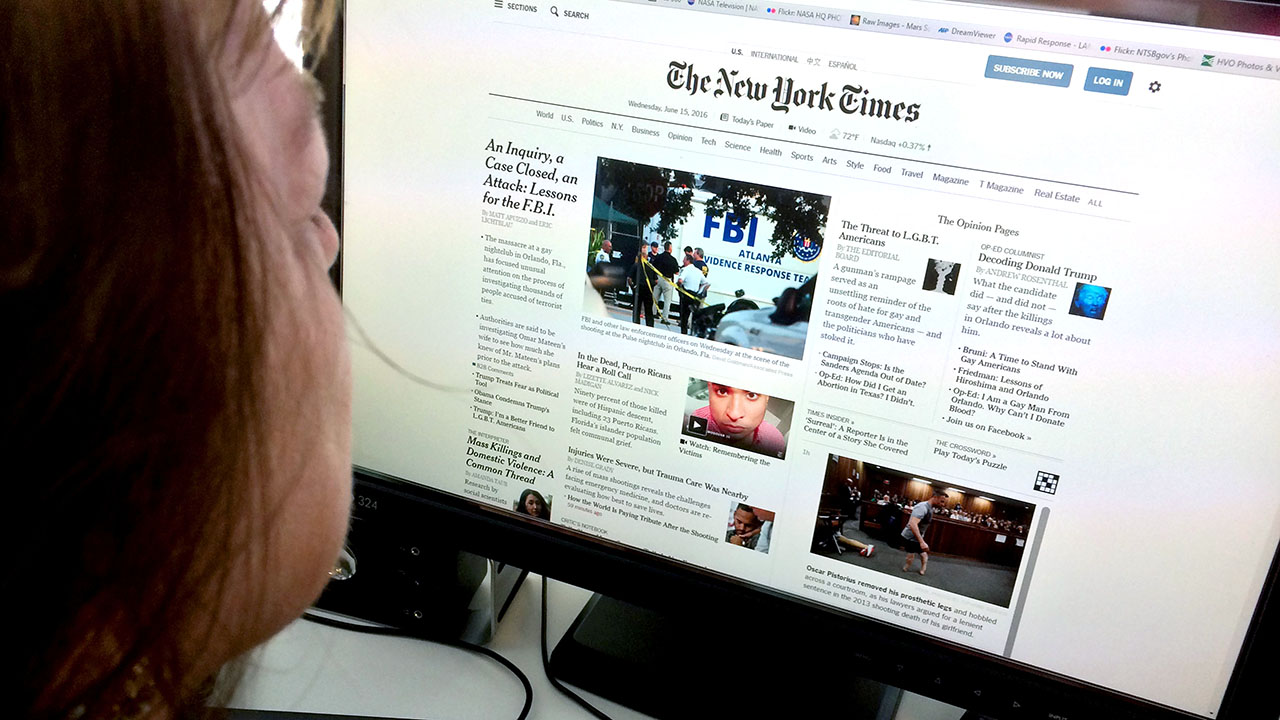Comprehensive World News Insurance Coverage with DW News Daily
Comprehensive World News Insurance Coverage with DW News Daily
Blog Article
The Evolution of Journalism in the Age of Information Online
In the quickly changing landscape of journalism, the electronic age has introduced a new age where the immediacy of online information reshapes both its production and consumption. As electronic platforms multiply, they enhance interactivity and widen the reach of journalism, yet concurrently challenge standard norms with the swift spread of info and false information alike. The increase of person reporters and independent voices further complicates the story, contributing to a vivid yet precarious media ecosystem. As we browse these intricacies, one need to ask yourself about the future of journalistic stability and how it can be protected among these transformative changes.

Increase of Digital Information Platforms
The surge of electronic news systems has actually fundamentally changed the landscape of journalism, marking a shift from typical print media to dynamic, on the internet rooms. This evolution was propelled by developments in innovation and the enhancing ease of access of the internet, which allowed information to be disseminated quickly and broadly. Unlike their print equivalents, electronic systems can immediately upgrade content, providing real-time information coverage and analysis that interest the modern-day reader's need for immediacy and importance.
Digital systems have also broadened the range of journalism, making it possible for a diversity of voices and viewpoints. With lower obstacles to entrance, independent journalists and smaller news organizations can reach international audiences, challenging the syndicate as soon as held by established media corporations. This democratization of information has actually enhanced the public discussion, supplying varied narratives and dealing with specific niche rate of interests that were previously underserved.
Additionally, the combination of multimedia components such as video, audio, and interactive graphics improves storytelling, making news much more available and engaging (dw news). This multimedia approach not just brings in a more comprehensive target market however likewise aids in the comprehension of complex stories. In essence, electronic systems have actually redefined journalism, promoting advancement and versatility in an ever-evolving media atmosphere

Influence of Social Media
Social network systems have actually further transformed journalism by altering exactly how information is taken in and shared. These systems have actually equalized information circulation, making it possible for any person with net accessibility to report occasions in real-time. This immediacy has actually positioned typical information electrical outlets in a race to maintain, compelling them to adopt faster reporting techniques. Furthermore, social networks has expanded audiences, granting journalists accessibility to worldwide viewership beyond geographical constraints.

The interactive nature of social media sites promotes engagement, allowing target markets to take part in discussions, share point of views, and contribute to news stories. This interaction boosts the vibrant in between reporters and their target markets, advertising a more participatory kind of journalism. Nevertheless, this also positions enormous stress on reporters to create content that reverberates with audiences, often focusing on sensationalism to capture focus.
Additionally, social networks platforms have actually become essential devices for reporters to source tales, evaluate popular opinion, and connect with industry peers. By keeping track of trending topics and user-generated material, reporters can discover stories that may otherwise be ignored. Yet, the dependence on social networks additionally necessitates an essential examination of sources to guarantee the reliability of details shared. In this evolving landscape, flexibility remains vital for journalists to flourish.
Challenges of Misinformation
Among the electronic revolution of journalism, one substantial challenge is the pervasive spread of misinformation. In an age where information is swiftly accessible and plentiful, comparing qualified information and made web content has actually come to be significantly hard. The large volume of info distributed across various online platforms often blurs the line in between reality and fiction, presenting a significant danger to the stability of journalism.
False information can spread out swiftly with social networks, where algorithms focus on involvement over precision, unintentionally magnifying false narratives (dw news). This not just threatens public count on media institutions yet additionally promotes an environment where deceitful web content can affect popular opinion and decision-making processes. The challenge for reporters is twofold: to disprove fallacies successfully and to copyright strenuous requirements of fact-checking and verification
More complicating this problem is the presence of deepfakes and innovative disinformation campaigns that utilize advanced technologies to produce misleading web content tantamount from genuine coverage. As these innovations evolve, so need to the approaches and tools used by journalists to battle them. Attending to false information needs cooperation between media companies, technology business, and policymakers to create extensive approaches that protect the credibility of information in the electronic age.
Function of Resident Journalists
Browsing the landscape of misinformation highlights the transformative effect of citizen journalists within the electronic realm. As standard media electrical outlets grapple with the sheer rate and volume of news circulation online, citizen journalists-- average individuals equipped with smart devices and access to social networks-- are playing a significantly critical duty. These grassroots contributors have actually become critical in covering occasions swiftly, commonly giving real-time updates from the ground prior to mainstream media can react.
Person reporters have actually equalized information reporting, magnifying voices that may or else continue to be unheard. By leveraging systems like Twitter, Facebook, and Instagram, they supply varied viewpoints that test the narratives frequently pushed by developed media.
However, person journalism is improving the media landscape, compelling conventional outlets to adapt by incorporating user-generated web content into their reporting. By fostering area interaction and encouraging participatory journalism, these digital storytellers add to a more comprehensive and dynamic information ecosystem. As person reporters continue to evolve, their duty in forming public discourse remains a necessary element of contemporary journalism.

Future of Journalistic Stability
The proliferation of electronic platforms has equalized info circulation, allowing a wider array of voices to contribute to the information landscape. This has actually also led to the spread of false information and the erosion of trust in media.
The increase of expert system and algorithm-driven material curation further makes complex the landscape. While AI can boost reporting by site link assessing huge datasets and identifying patterns, it also presents risks of prejudice and manipulation. Reporters should therefore remain alert, guaranteeing that innovation serves as a tool for truth instead of distortion.
Moreover, the economic stress on conventional media electrical outlets demand ingenious company versions to maintain quality journalism. Subscription-based versions, not-for-profit funding, and collaborations with tech firms are arising as potential remedies. Yet, they should be sought without compromising content independence.
Inevitably, the future of journalistic stability depends on the dedication of media and reporters organizations to maintain transparency, liability, and a steadfast devotion to truth, among a rapidly transforming digital globe.
Final Thought
The advancement of journalism in the digital age offers both opportunities and obstacles. The rise of digital information platforms and social networks has democratized info circulation, empowering a varied array of voices, including person reporters. Nevertheless, these innovations necessitate vigilant efforts to deal with false click this link information and support journalistic honesty. The future of journalism rests on the ability to adapt ingenious organization models that sustain high quality coverage while keeping the trustworthiness and trust fund important for notified public discussion.
The increase of digital information systems has actually basically changed the landscape of journalism, noting a over here change from typical print media to vibrant, on-line rooms. With lower barriers to entrance, independent journalists and smaller news companies can get to international target markets, testing the syndicate when held by established media conglomerates.Social media platforms have actually better reinvented journalism by changing exactly how news is consumed and shared. As traditional media electrical outlets grapple with the large rate and volume of news circulation online, person journalists-- normal individuals armed with smartphones and accessibility to social media-- are playing a progressively essential role. The rise of electronic news platforms and social media has actually democratized information circulation, equipping a diverse array of voices, consisting of resident journalists.
Report this page